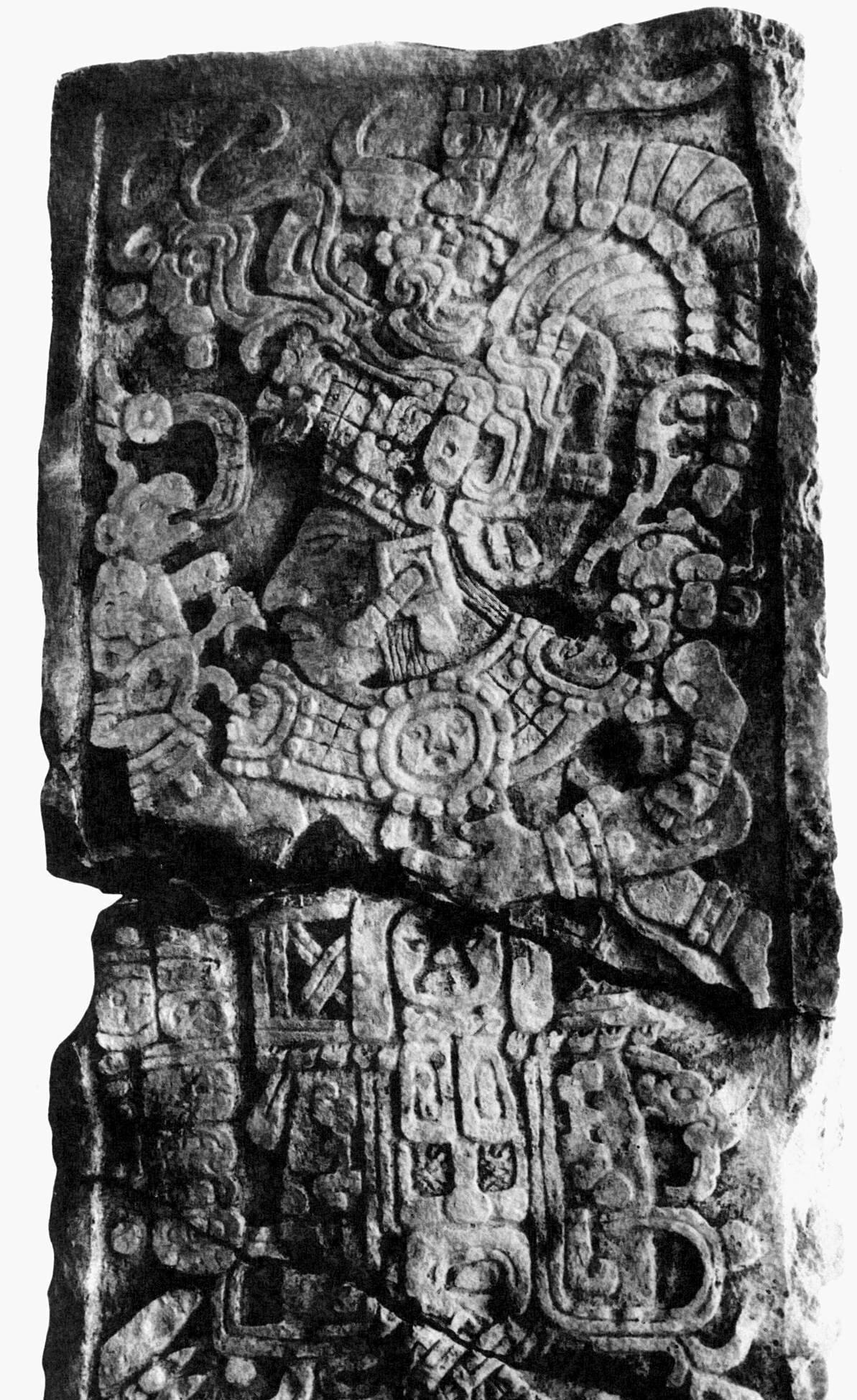
Project History
Sylvanus Morley was told about a large ruin by a chiclero (gum-resin harvester) named Aurelio Aguayo, who claimed to have first come across the jungle city five years prior. He was not disappointed, excitedly calling the site “the largest city of the Old Empire in northeastern Petén.” It was during this first visit that Morley and his team named the site Xultun—xul meaning “end” and tun meaning “stone” in Yukatek Mayan. This name was chosen for the 10.3.0.0.0 date of Stela 10 (889 CE), the latest known Long Count date in the Maya Lowlands at the time. Between 1921 and 1924, the Carnegie Institution generated a rough map of Xultun’s main architectural groups and documented its carved monuments.
In the 1970s in the midst of the Guatemalan Civil War, Erik Von Euw spent several months at Xultun on behalf of the Harvard Corpus of Hieroglyphic Inscriptions Project. He noted the disappearance of various monuments including Stela 10 and widespread looting underway, the scars of which are still visible across the site.
1920 - 2000
Just nine kilometers to the north of Xultun is the smaller site of San Bartolo. The SBX project officially began in 2001, when San Bartolo was registered by William Saturno during reconnaissance for the Harvard Peabody Museum’s Corpus Project. Immediately recognizing the significance of the site’s early in situ mural that had been partially exposed by looters, Saturno assembled a research team who collaborated to excavate, document, and conserve the mural and its many fragments. With the murals as its catalyst, the project concurrently investigated site occupation and questions of material culture, political complexity, regional urbanization, and human-landscape interaction at San Bartolo. The project expanded its study to Xultun with a research program beginning in 2010, after a season of mapping and test-pitting. Xultun is a very large city with a dense core of public buildings, large plazas, and numerous monuments, surrounded by extensive residential areas. Investigations have focused on settlement distribution, economics and resource use, and local dynastic history, as well as examining early construction phases through tunnel excavations.
What’s happening now? A lot! Learn more about our current research awards and initiatives here.
2001 - 2021
2022 and beyond…
PRASBX Core Values
Research.
We have learned a great deal about the socio-political history of San Bartolo and Xultun through the last twenty years of archaeological investigations. Our central focus is the synthesis of these results into publications that incorporate a review of ceramic analysis, a comprehensive radiocarbon dating effort, and recently acquired lidar data courtesy of the Pacunam Lidar Initiative. And new archaeological work is underway! Our current research initiatives explore inter-site settlement and anthropogenic impacts on local ecology, which includes a newly discovered ancient settlement that lies between San Bartolo and Xultun both geographically and chronologically: a city called Xulbe.
Conservation.
Conservation is central to our project mission. Our conservation initiatives span in situ artworks and architecture, as well as SBX materials at the Museo Nacional de Arqueología y Etnología (MUNAE), Guatemala. Ongoing environmental and condition monitoring of buried mural chambers and stucco friezes inform our conservation plan and activities on site. The San Bartolo Mural Fragment Corpus now at MUNAE is the largest collection of mural painting held by a museum in Latin America, posing unique challenges and opportunities. Future work will focus on preventative conservation on site, stelae stabilization, and rotating new mural scenes into exhibit at MUNAE.
Community.
PRASBX collaborates with individuals and families from several communities of Petén including San Andrés, San Miguel la Palotada, Caoba, Cruce Dos Aguadas, Dolores, Dos Aguadas, Macanche, Machaquila, and Uaxactun. We seek to address the interests and concerns of these project members in our project objectives. Local groups, including the Asociación de Comunidades Forestales de Petén, the Asociación Civil Árbol Verde, the Consejo Nacional de Áreas Protegidas, and the Organización Manejo y Conservación en Uaxactun, are valued partners as we look ahead. Current initiatives include mural biota, accessible educational materials on SBX, and a long-term site management plan.

Our partners
The PRASBX archaeological and conservation program is conducted with the permission of the Ministerio de Cultura y Deportes de Guatemala, through the Dirección General del Patrimonio Cultural y Natural. We extend our appreciation to the personnel in the office of the Viceministerio del Patrimonio Cultural, the Departamento de Monumentos Prehispánicos y Coloniales, Ceramoteca, Supervisores del IDAEH, and the Inspectoría Regional de Flores, Petén. Our current research activities (2021-2025) are funded by grants from National Endowment for the Humanities, National Geographic Society, Prince Claus Fund for Culture and Development of the Netherlands, and the Dumbarton Oaks Research Library and Collections, and the generosity of Peter Swift & Diana McCargo and several anonymous individuals. We are deeply appreciative of the institutional support of Skidmore College, the University of Texas at Austin, The Mesoamerica Center & The Casa Herrera, the University of Alabama in Huntsville, the National Aeronautics and Space Administration, and partnering with the Universidad de San Carlos de Guatemala and the Museo Nacional de Arqueología y Etnología, Guatemala City. Lidar data is provided courtesy of the Pacunam Lidar Initiative. We are grateful for support of our community initiatives for pandemic relief from numerous donors and the Maya Relief Foundation.
Previous support for research at San Bartolo-Xultun includes project awards from: Archaeological Institute of America; Boston University; Boundary End Archaeological Research Center; Brigham Young University; Dumbarton Oaks Research Library and Collections; Foundation for the Advancement of Mesoamerican Studies; John D. and Catherine T. MacArthur Foundation; John Simon Guggenheim Memorial Foundation; National Aeronautics and Space Administration; National Endowment for the Humanities; National Geographic Society; National Science Foundation; Peabody Museum of Archaeology and Ethnology, Harvard University; Petén Archaeological Conservation Associates; Reinhart Family Foundation; Rust Family Foundation; Skidmore College; Smithsonian Tropical Research Institute; United States Department of State, Ambassador’s Fund for Cultural Preservation; Universidad de San Carlos de Guatemala; Universidad del Valle de Guatemala; University of Texas at Austin and the Mesoamerica Center & La Casa Herrera, as well as awards to individual investigators.




